|
Even a broken clock is right twice a day...
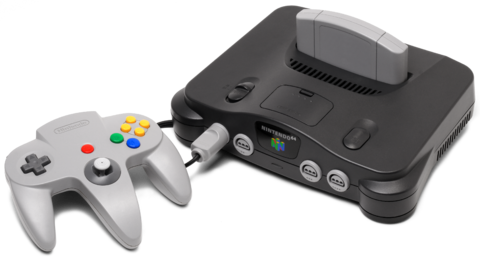
To most long time Nintendo fans, the N64 was a financial and critical disappointment, in short, a failure. It's hard to argue that statement when it has the smallest library of games out of any of Nintendo's home consoles and was beaten in sales hand over fist by the PlayStation. However, it would be silly to think that the N64 never brought any innovation to the gaming industry, or have genuine qualities, be it notable game releases or useful accessories. In partial response to an earlier top ten list, Biggest N64 Disappointments, Micro-64 presents the top ten things the N64 did right.
#10 - N64 System Colors and Models 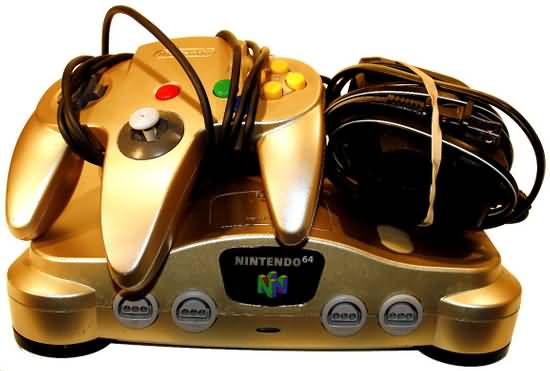
Most game systems tend to only ever come in one color or model, but sometimes there are special versions, such as exclusive colors or even revised hardware variations at a reduced price. The N64 wasn't the first to do such things, but it's one of the few consoles to be so prolific in that regard. The standard N64 was a sort of a charcoal gray / black color with light gray trim. But then, Nintendo got the genius idea of going beyond just one flavor of N64. In 2000, they unveiled the "Funtastic" series, which consisted of a line of different colored N64s and tons of different controllers to go with them. What made these colored N64s neat was they were all transparent. Colors like red, green, blue and orange were available, as well as a transparent version of the standard dark gray N64. Even more funtastic flavors were released internationally as well. Then, Nintendo went a step further. To cash in on the Pokemon craze, they released a special version of the N64 adorned with Pikachu on it. There was a pokeball to turn the console on, Pikachu's foot to reset it and Pikachu's cheeks would even light up while the console was powered up. This system was different enough from the standard N64 to be given a new model number, NUS-101. Strangely though, unlike most redesigned Nintendo systems, the Pikachu system is larger than the original N64. But, even a special redesigned model wasn't enough, what was I guess meant to coincide with the Zelda games, Nintendo made a gold N64 system with gold controllers too. Up until that point in history, Nintendo never made a gold console, so this was a pretty significant hardware variation. Even more system versions and packages were released in Japan and PAL territories. The N64 might not have been the first console to have lots of hardware variations released for it, but it sure did have a lot of them. One could even say that the N64 proved to Nintendo that different console colors and models could be profitable. And hey, how many consoles were ever released in gold? Seriously.
#9 - Wrestling games 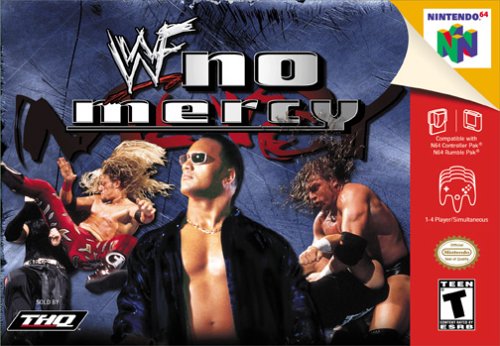
Sports games have always helped float game systems across the treacherous waters of failure. Even the best blockbusters and third party games usually need to be supported by the monstrously huge sports consumer market. However, it's not too often a game system is partially defined by sports games, much less a single genre. The N64 isn't particularly known for its football, hockey, basketball or baseball games, but the system's catalog of wrestling games stands out quite boldly. Out of 9 or so entries in the genre, and the variety of companies behind them, the most common favorites are WWF No Mercy, WWF Wrestlemania 2000 and WCW/NWO Revenge, all developed by AKI and published by THQ. They made great use of the N64's 4 controller ports and offered plenty of great features, addictive gameplay and good controls. Wrestlemania 2000 and No Mercy even offered a create-a-character mode, further adding replayability. Even today, compared to the hundreds of new wrestling games released every so often, wrestling gamers always fondly remember the N64 installments.
#8 - The Rumble Pak 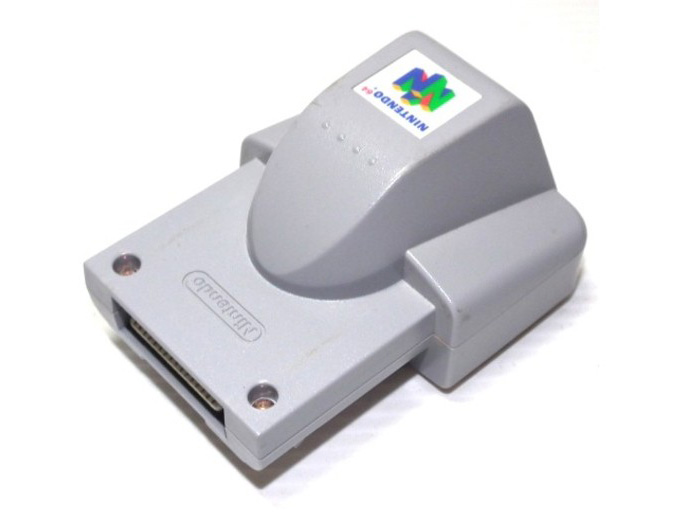
Force Feedback is a technology most people take for granted on modern consoles, but it had to start somewhere. Now, I'm not really a game historian so I don't know where it started, but I do know that controllers with rumble functionality were popularized on the N64. The Rumble Pak accessory was first bundled with Star Fox 64 in 1997, but was also sold separately. What it did was vibrate the N64 controller at varying speeds to simulate ground shakes, or thrusting engine boosters, or an indicator of onscreen commands and many other things. Lots of N64 games were compatible with it, making the Rumble Pak a useful accessory. It took two AAA batteries, but they lasted a long time. Third party companies also made their own which didn't need batteries. In short, the Rumble Pak was well received and sold quite well. It was so successful in fact, Sony decided to copy Nintendo's Rumble Pak and include two of them in their PlayStation controller, resulting in the DualShock. The Rumble Pak lives on in virtually every game console and game controller, perhaps not every gimmicky accessory Nintendo releases is bad after all.
#7 - GoldenEye 007 
Is there a word for something that completely defies its stereotype and predispositions? I'm not sure, but someone should have invented such a word to describe GoldenEye 007. This game started out as a blockbuster movie, typically popular like all James Bond films are. A couple of years later, Rareware released a video game adaption to tie in with the film. Now, as everyone knows, a licensed video game, especially ones based off movies, are always garbage. The developers are never allowed enough time or creative freedom to make a decent game, mostly due to schedule limitations so the game sells better based on the reception of the movie. This was apparently not the case for Rareware, seeing how Goldeneye was released two years after the film. What Rareware made has stood for years as one of the best licensed video games of all time. Over 10 years later and well into 15, people STILL rave about this game's innovative multiplayer modes and complex (for the time) single player campaign. People point to it as the first great home console FPS and cite it as one of the pioneers of the modern day first person shooter, which all have involved story missions and great multiplayer options. GoldenEye might be a bit hard on the eyes compared to graphics of today, but not even time can erode quality gameplay.
#6 - Super Smash Bros. 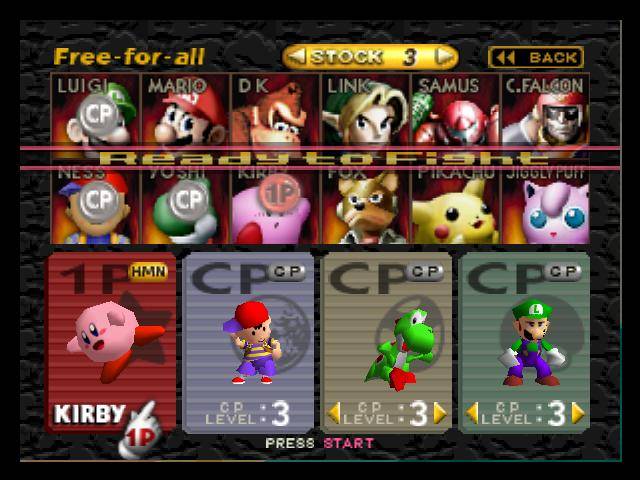
What started out as a very strange idea became a staple of both Nintendo and gaming culture as a whole. Super Smash Bros., released in 1999, was a massive critical success and would go on to become one of Nintendo's mainstay franchises, but it almost stayed Japan-only and had a somewhat murky back story. The idea of the game was simple; characters from Nintendo's first and second party game series are brought together into a free form fighting game, with weapons, power-ups and stages also representing different games. It's an idea similar to that of SNK's King of Fighters series which began in 1994, but what made Super Smash Bros. unique is virtually none of the characters who appear in the game actually come from fighting games. Despite that and the vastly different visual styles of each character in the game, Nintendo's trademark magic melded the game together in such a way that even westerners could understand and appreciate it. Super Smash Bros. is not only a surprisingly well defined game with endless replay value, but it became a trendsetter with imitators being released in the coming years and a fan following unlike that of any other game series. And to think, all that started on the Nintendo 64.
#5 - Popularizing 4-Player games 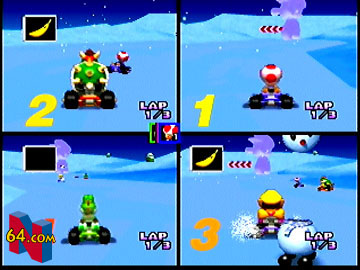
Gaming with more than two players wasn't invented on the N64, but it certainly became a staple of video gaming afterwords. Even on Nintendo's earlier systems, and their competitors, there were multi-taps and adapters that allowed for 4 (or sometimes 5) players at once in the same game. The only problem though, was very few games ever got made to support such adapters, and you had to buy the adapter in the first place. The Atari 5200 was the first home console to include 4 controller ports, but again very few games ever utilized all of them, nor did this feature carry over onto future systems. 4 player gaming on the same TV screen only became popular with the release of the Nintendo 64. Not only did it have 4 controller ports, but Nintendo actually made a significant effort to make use of them all. 2nd and 3rd party developers followed suit. The N64 truly did popularize 4 player games, because almost every game console made after its release included 4 controller ports (except for the PS2 for some bizarre reason). What's more, the N64 remains one of the most highly praised multiplayer consoles of all time, with classics like GoldenEye 007, Mario Kart 64, Super Smash Bros., Mario Party and tons more.
#4 - Rareware 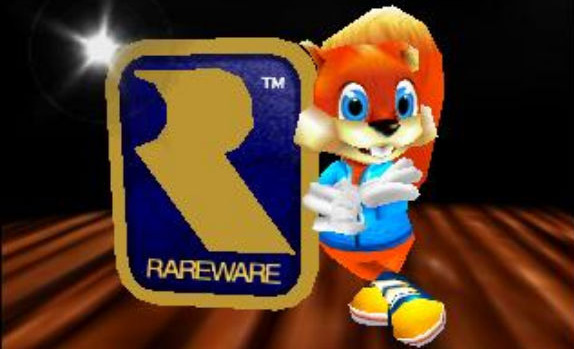
This entry might seem a bit odd, but I'll explain. To put it simply, Rareware released more than 10 games on the N64 and there's other stuff I had to put on this list, so all of Rareware's releases had to be condensed into one entry (except for GoldenEye 007, it was significant enough to get its own entry). Yes, I'm being serious. Rareware's N64 release list is so high in quality that I could easily populate this entire top ten list with their games. I'm not saying that in a hyperbolic manner either, just go look up any popular review or aggregator site like Metacritic or Gamerankings. It goes without saying that without Rareware, the N64 most likely would have died early and severely damaged Nintendo. Perhaps not to the extent of exiting the hardware business or bankruptcy, but it would be wrong to say Rareware didn't end up selling a ton of N64 consoles with their games. Nary was a single game met with negative or even mixed reception upon release, they all sold very well and the quality of each game greatly rivaled that of Nintendo's offerings. From their early titles like Killer Instinct Gold, Diddy Kong Racing and Blast Corps, to late releases like Banjo-Tooie, Conker's Bad Fur Day and Mickey's Speedway USA, Rareware was a hot commodity.
#3 - The Expansion Pak 
The Expansion Pak was not only a great accessory for the N64, but a very notable innovation. The Expansion Pak was a 4 Megabyte RAM cart that started life as a requirement for use with the Nintendo 64 Disk Drive add-on. When the 64DD failed, the Expansion Pak took on a new purpose of improving cartridge games. It was in November 1998 that the expansion pak was quietly released. Developers were initially uninterested in supporting the device, but that soon changed when Acclaim wowed the video game industry with the high resolution graphics from Turok 2, South Park, and NFL Quarterback Club 99. Many games being released used the Expansion Pak for framerate and graphic improvements. Donkey Kong 64 and Zelda: Majora's Mask require the Expansion Pak entirely. The Expansion Pak's inclusion on this list is not necessarily because it was used by many games, but because it represented a desperately needed innovation in the video game industry. RAM is a hardware component in game systems that has always been a significant limitation for game developers. RAM has always been expensive and it is partially responsible for a game's amount of content, or graphical capability, or even the system's music quality. The inclusion of a RAM upgrade slot in the N64 meant the system could live a potentially longer life before becoming too outdated. This would benefit anyone developing for the N64. It was an idea first made use of in the Sega Saturn, but for some inexplicable reason, a RAM upgrade slot has never been featured on a game console since. Perhaps it's because RAM has gotten cheap enough to no longer be a problem, but as it stands, the N64's Expansion Pak stands as not only an improvement to the system's game catalog, but to the innovation of technology in video games.
#2 - Legend of Zelda: Ocarina of Time 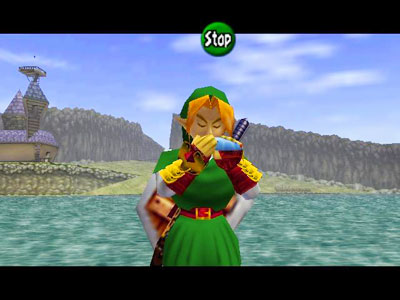
What can possibly be said about Ocarina of Time that hasn't already, in its more than 10 years of lavish praise and accolades? Aside from Super Mario 64, it's one of the N64's best games. It sold millions upon millions of copies, received tons of awards and rave reviews and has been ported multiple times and even remade with new graphics. Ocarina of Time not only brought the Legend of Zelda series into 3D, but it did so masterfully with many innovative gameplay mechanics that would go onto inspire many imitations. It re-introduced LOZ to a new generation of gamers and was quite cinematic for its time. It featured a large number of dungeons, tons of tools and weapons to solve puzzles with, included a lengthy side quest and to this day continues to provide gamers with neverending glitches, further adding to the game's replay value. It popularized the real life musical instrument, the Ocarina, and it even sparked controversy surrounding certain religious chanting. Not many games ever accomplish such feats, especially all at once. Although oddly enough, the Triforce could never be obtained and kept in Link's inventory.
#1 - Super Mario 64 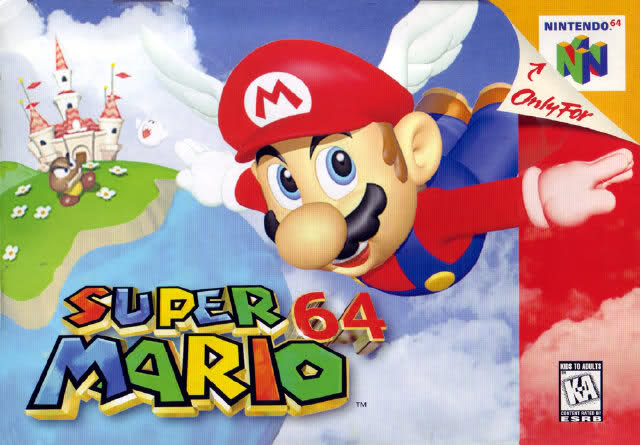
It goes without saying, without Super Mario 64, the N64 would have been crippled at launch. In fact, quite possibly the entire video game industry wouldn't be the same without this game. Super Mario 64 wasn't just a great and memorable game, it wasn't just a system seller and it wasn't even just an innovator in 3D platforming - it was all that and more. Super Mario 64 is one of those rare freak accidents that accomplish many near impossible feats all at once. Most gameplay concepts in Super Mario 64 were risks that hadn't been tried in prior video games. Any prior 3D platformers had various problems that made them feel incomplete and ill designed. Just the fact that Super Mario 64 was such a huge success upon release is a miracle. Many popular 2D game series crashed and burned in 3D, including Mario's most well known corporate rival, Sonic. What's more, Super Mario 64 was one of only two launch titles for the N64. Most game consoles perform very poorly upon launch if they don't have enough games. Super Mario 64 (and Pilotwings 64 for that matter) was so good, it made people forget there were only two games available for it. What further cemented Super Mario 64 as a groundbreaking game is tons of future games borrowed, copy and sometimes stole gameplay concepts from it. Firsts in any field or medium aren't always the best, but rare exceptions do exist, and Super Mario 64 is one of them.
Written By: Aaron Wilcott
April 14th 2013
|